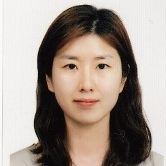Novel Applications of Surface Water–Groundwater Modeling
A special issue of Water (ISSN 2073-4441). This special issue belongs to the section "Hydrology".
Deadline for manuscript submissions: 23 July 2024 | Viewed by 13135
Special Issue Editors
Interests: integrated surface water–groundwater modeling; hydrologic modeling; SWAT-MODFLOW
Special Issues, Collections and Topics in MDPI journals
Interests: coupled flow and transport modeling; seawater intrusion; nonlinear groundwater problems; MODFLOW; MT3D; SEAWAT; GALDIT
Special Issues, Collections and Topics in MDPI journals
Interests: groundwater hydrology; coupled surface/subsurface hydrologic modeling; contaminant transport in watershed systems; SWAT; SWAT+; SWAT-MODFLOW
Special Issues, Collections and Topics in MDPI journals
Special Issue Information
Dear Colleagues,
Recently, a surface water–groundwater combination model has been developed and applied in various ways. However, each model has different characteristics and different purposes of interpretation. The purpose of this Special Issue is to seek deeper insights by collecting new applications of integrated models that are developed for various purposes. These can include river–groundwater interactions, the reduction in river water due to groundwater withdrawal, the reduction in groundwater level due to a decrease in river water volume, and evaluation of the water balance of the watershed. In addition, it is expected that the connection modeling between the flow of groundwater–surface water and solute transport will be important. The groundwater-dependent ecosystem and hyporheic flow modeling are two of the main topics.
Dr. Il-Moon Chung
Dr. Sun Woo Chang
Dr. Ryan Bailey
Guest Editors
Manuscript Submission Information
Manuscripts should be submitted online at www.mdpi.com by registering and logging in to this website. Once you are registered, click here to go to the submission form. Manuscripts can be submitted until the deadline. All submissions that pass pre-check are peer-reviewed. Accepted papers will be published continuously in the journal (as soon as accepted) and will be listed together on the special issue website. Research articles, review articles as well as short communications are invited. For planned papers, a title and short abstract (about 100 words) can be sent to the Editorial Office for announcement on this website.
Submitted manuscripts should not have been published previously, nor be under consideration for publication elsewhere (except conference proceedings papers). All manuscripts are thoroughly refereed through a single-blind peer-review process. A guide for authors and other relevant information for submission of manuscripts is available on the Instructions for Authors page. Water is an international peer-reviewed open access semimonthly journal published by MDPI.
Please visit the Instructions for Authors page before submitting a manuscript. The Article Processing Charge (APC) for publication in this open access journal is 2600 CHF (Swiss Francs). Submitted papers should be well formatted and use good English. Authors may use MDPI's English editing service prior to publication or during author revisions.
Keywords
- surface water
- groundwater
- interactions
- coupled model
- hyporheic zone
Planned Papers
The below list represents only planned manuscripts. Some of these manuscripts have not been received by the Editorial Office yet. Papers submitted to MDPI journals are subject to peer-review.
Title: Modeling on the effect of artificial groundwater recharge
Authors: Gyoo Bum Kim
Affiliation: Daejeon University
Title: SWAT-MODFLOW application to groundwater irrigation
Authors: Ryan Bailey
Affiliation: Colorado State University
Title: Long-term prediction of surface water–groundwater interaction by the impact of groundwater exploitation
Authors: Sun Woo Chang
Affiliation: KICT
Title: Streamflow depletion due to groundwater abstraction
Authors: Jeongwoo Lee
Affiliation: KICT
Title: FEM modeling of river–aquifer interactions
Authors: Jae Young Lee
Affiliation: Sihnwoo E&C







